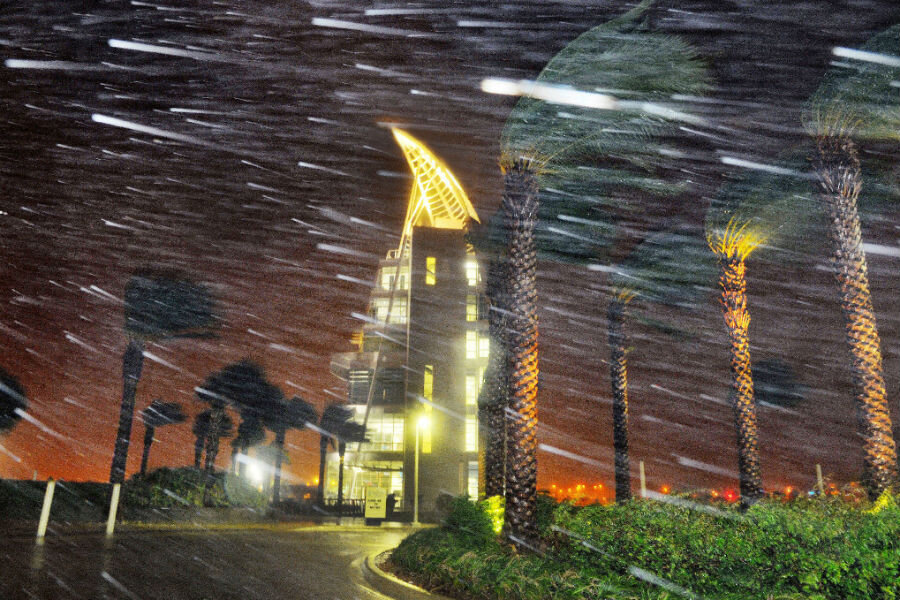NASA 'dodged bit of a bullet' as Matthew swept through Cape Canaveral
Loading...
As the state of Florida braced for the impact of hurricane Matthew, it seemed that Cape Canaveral, the site of NASA's Kennedy Space Center, would be directly in the storm's path. The staff was reduced to a skeleton crew to ride out the storm, and the park was closed to visitors.
But before the hurricane descended on the complex, the winds shifted and the storm began to weaken. As the storm moved away, the skeleton crew immediately began to assess the damage.
The news from the assessment seems to be good. Despite the ferocity of the storm, it seems that most of the damage is minor, and the center is set to partially reopen for visitors today.
"We dodged a bit of a bullet last night with things shifting to the east and the storm being less intense overall," Brig. Gen. Wayne Monteith, commander of the 45th Space Wing, wrote in a Facebook post Friday, according to Florida Today. "That said, we are not out of the woods yet and your safety remains my primary concern."
The NASA complex, which contains multiple launch pads, office buildings, and the enormous Vehicle Assembly Building, which was originally designed to house and build the massive Saturn V rocket. While it will take time to assess the damage for every building in the complex, preliminary reports of damage seem to be minor.
"If it had been a direct hit, we would have had far more serious damage than we had that would have been more critical," George Diller, a KSC spokesman who was part of the 100-plus person team staged in the Launch Control Center during the hurricane, told Florida Today. "The kind of damage we have now is what I’d call collateral damage. We’re not seeing anything to flight hardware yet that we know of."
The Kennedy Space Center is located right on the water, a design choice made in the early days of the space program to minimize the potential impact on civilians should something go catastrophically wrong during a launch. Considerations were made in designing the facilities to be hurricane-resistant, especially after hurricane Andrew, the most destructive storm in history at that point, hit Florida in 1992. After Andrew, all new buildings in the complex were constructed to withstand stronger storms with winds of 130-135 mph, according to a 2006 NASA hurricane plan. But in 2004, hurricane Frances made a direct hit on the area, toppling rocket displays and causing significant damage to the Vehicle Assembly Building.
But the center seems to have avoided that degree of damage this time around, despite winds averaging between 58 and 81 mph, with gusts of up to 132 mph.
According to a NASA blog, damage assessment began immediately after the wind dropped to relatively safe levels on Friday. On Saturday, aerial surveys revealed that there had been "some isolated roof damage, damaged support buildings, a few downed power lines, and limited water intrusion." The next step is for inspectors to make thorough safety checks of each building in the complex, making sure that the damage is as minor as it seems from the air.
The Space Center re-opens for visitors today, but certain areas will be off-limits until inspections are complete. An update from the inspectors is expected no earlier than Sunday afternoon.








